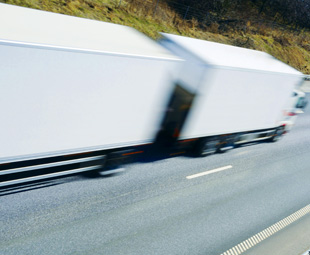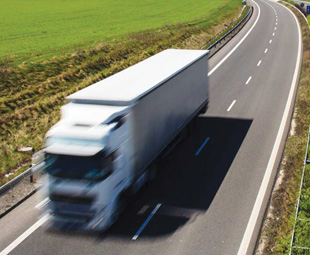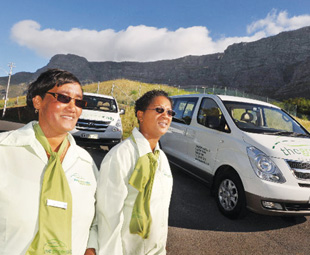A transport sector in transit?

South Africa is the second-largest economy in Africa with an abundant supply of natural resources. Recently, problems have escalated regarding the levels of trade with other countries. Could there be an underlying problem hindering the growth of our economy? AIMEE SHAW attended the recent Women in Transport and Logistics Conference, for more information.
South Africa is the world’s largest producer of platinum and chromium and the fifth-largest producer of gold. Since 2005, however, the country’s total export growth has increased by only 0,6 percent. As a result, trade is falling short of its potential as the country accounts for only 0,48 percent of global exports and 0,64 percent of global imports.
Exports play a large role as a performance indicator of the total gross domestic product (GDP), which is described as the fiscal value of all finished goods and services produced within a country’s borders in a specific time period. In the South African economy, exports comprise approximately 31 percent of the total GDP, while imports account for approximately 33 percent of the total.
Despite China, the United States of America (USA) and Japan being among South Africa’s major trading partners, Africa accounts for only five percent of China’s trade. Similarly, South Africa accounts for less than one percent of the USA’s imports and exports. This leaves the entire African continent comprising only three percent of world trade.
 “South Africa’s contribution towards global surface transport intensity is more than double its contribution to global GDP,” says transport economics senior researcher at the University of Johannesburg, Rose Luke.
“South Africa’s contribution towards global surface transport intensity is more than double its contribution to global GDP,” says transport economics senior researcher at the University of Johannesburg, Rose Luke.
There are numerous structural reasons that could explain the low levels of trade across borders, but it comes down to logistics as a major obstacle in a transport-intensive country.
Logistics can be described as the management of the flow between the point of origin and the point of consumption, in order to meet the requirements of customers or corporations.
Some of the logistical aspects include transport costs, time, speed, distance and complex cross-border documentation requirements. As a result, deeper regional integration is key to ignite export growth.
Luke adds: “Logistics is not only a strategic resource requiring national attention, but a core competence that is deliberate and invaluable given the country’s regional position.” The transport sector is thus moving high-mass and low-value resources across borders with inadequate rail capacity and efficiency.
The solution might lean towards freight-corridor development strategies to create an environment that is targeted at reducing logistics costs and transit times, while increasing the capacity to more freight.
As an engine for economic growth, freight needs to be accessible to international markets.
According to the 2005 National Freight Logistics Strategy report: “Freight-corridor development strategies aim to deliver national solutions to the problems facing the country’s logistics systems.”
This can be achieved by addressing institutional provisions that hinder the efficiency of freight systems. An example would be to ensure adherence to regulatory compliance that is relevant to the business.
In closing, Luke says: “We need to define the role of government in a more proactive and hands-on manner to ensure improved coordination of the various role players.”
Due to current inconsistencies between infrastructure planning in the private and public sectors, it becomes increasingly relevant to establish clear boundaries between various elements of the logistics system.
An efficient transport system links and provides interchange opportunities for various modes of transport across global borders. South Africa requires a safe transport system that promotes regional and international trade with efficient commodity transportation from point of production to point of consumption. This would provide improved quality of services and facilities that adhere to profitable standards.
Transforming the road with Green Cab
Green Cab has created solutions for newly sustainable forms of transport.
Green Cab is a women-owned transport operation that is considered to be part of the sustainable mobility arena, meaning it has minimal impact on the environment.
 The company’s initiatives are aimed at addressing implications posed by global warming, and to reverse the negative impact it has on the environment. It is promoting economic and social transformation, while simultaneously aiming to become an integral part of the South Africa tourism sector.
The company’s initiatives are aimed at addressing implications posed by global warming, and to reverse the negative impact it has on the environment. It is promoting economic and social transformation, while simultaneously aiming to become an integral part of the South Africa tourism sector.
Green Cab provides its drivers with comprehensive “eco-driving” skills in accordance with a “green” driving code of practice, ensuring a “zero tailpipe emissions” policy.
Green Cab uses biofuels to power its vehicles and “green technologies” to further save fuel and reduce carbon emissions. Biofuels include any vegetable or animal fat-based fuel that can be created through a chemical reaction.
The Blade is another green technology device being used. By attaching it to the tailpipe of a petrol-powered car, SUV, light-duty truck or hybrid vehicle, toxic particulate material is captured to limit harmful emissions, while ensuring complete combustion for enhanced fuel efficiency.
Green Cab is continually researching the latest technology to ensure it provides the best quality within a changing economy and environment. The company is, thus, committed to deter a slide into ecological debt by deploying various emission-reduction technologies to promote “greener” forms of transport.
Published by
Focus on Transport
focusmagsa




